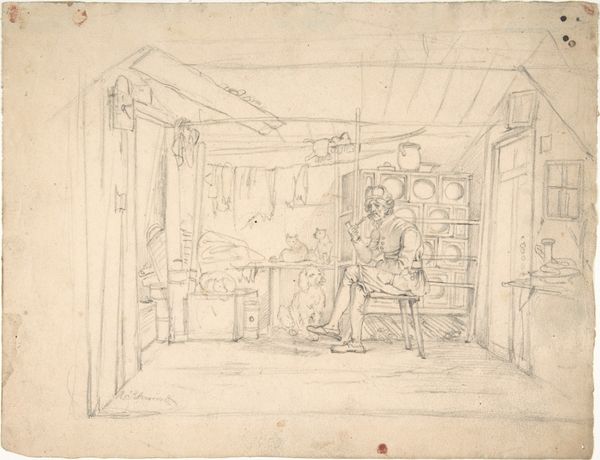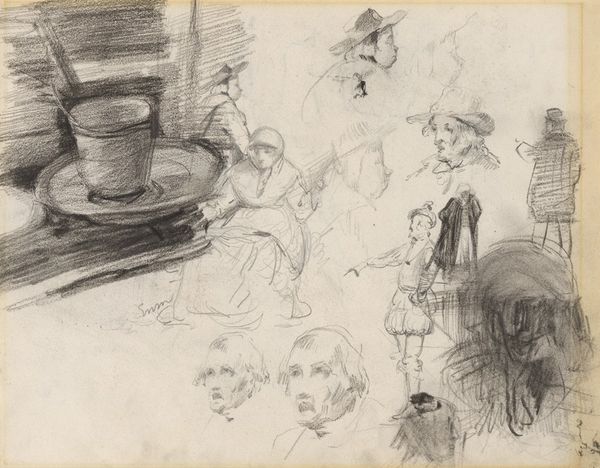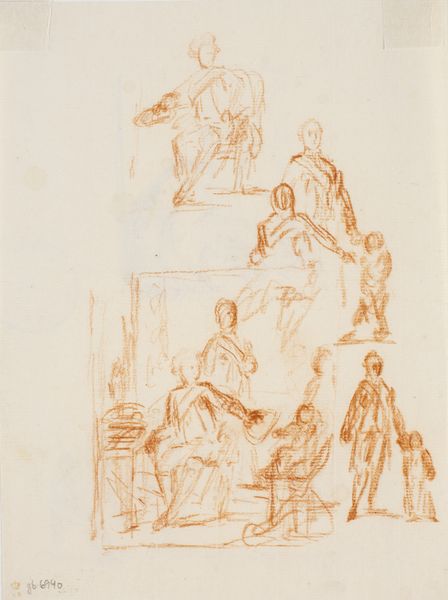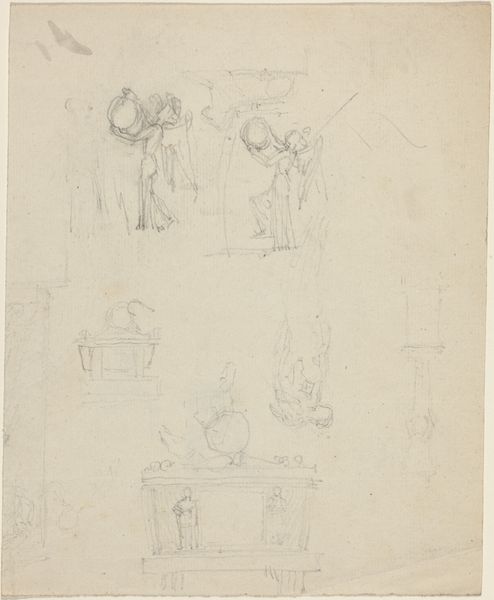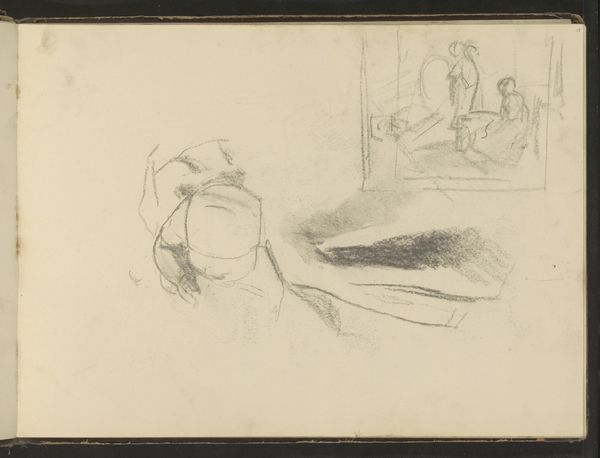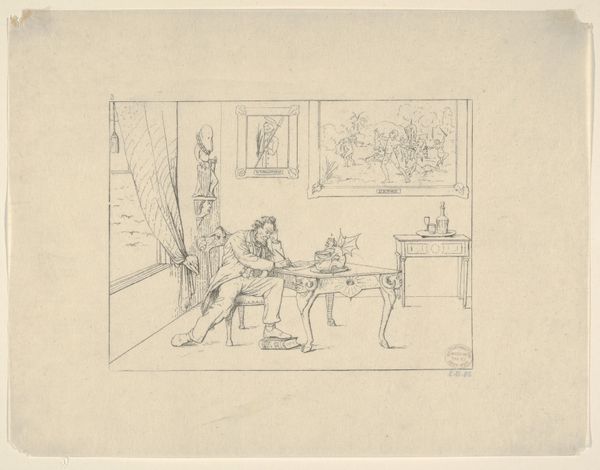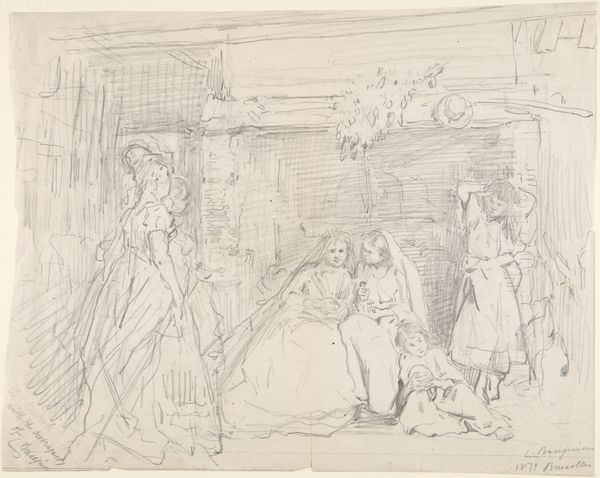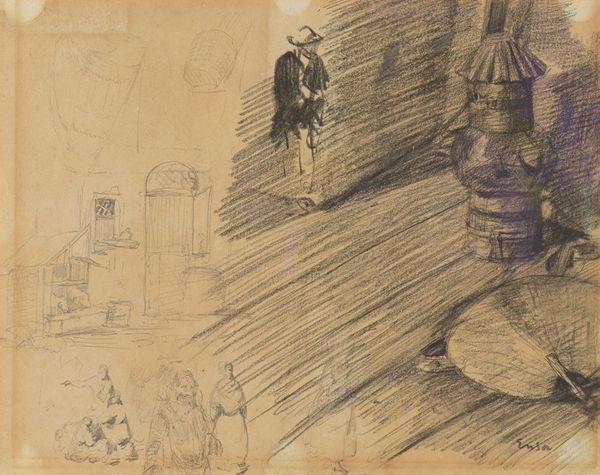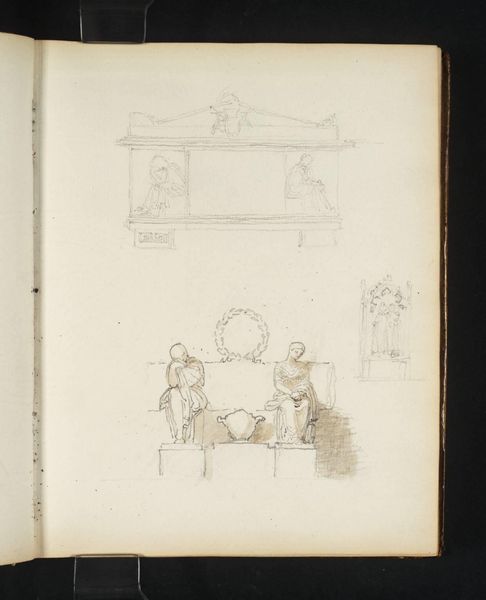
drawing, pencil
#
portrait
#
drawing
#
pencil
Copyright: Public Domain: Artvee
Curator: Welcome! This is James Ensor's "Still Life, Mirror, Seated Figure," a drawing rendered with pencil. Editor: Oh, my. A flurry of memories stirred in grey. It’s as though the air itself is solidifying around the forms – like waking from a dream where you're just trying to catch hold of what slipped away. Curator: The drawing shows a still life arrangement – a pitcher, a glass, a bowl of fruit – displayed on a table draped with cloth, set against a backdrop including a mirror and seated figure, the setting depicted in that somewhat muted palette characteristic of pencil drawings. What’s particularly interesting is how these domestic objects sit next to a sketch of a seated figure in the background. Ensor made this image on paper and it’s classified as portrait art. Editor: Yes, “domestic,” but teetering on the edge of haunted! The mirror seems to float free of context, the still life feels laden, almost… expectant? Is it waiting to be animated? Perhaps it suggests a sense of melancholic anticipation? Like the pause before the orchestra strikes up… but nobody ever quite begins to play. Curator: I see that tension. What stands out to me is how Ensor utilizes the conventions of still life. He simultaneously employs and questions this traditional mode of representation, revealing his complex relationship with the history of painting itself. Ensor’s other artwork featured grotesque characters that served as a satire of society. Although “Still Life, Mirror, Seated Figure” doesn’t showcase any peculiar figures, it can be argued that he imbued an eerie tone onto mundane subject matter in a subversive way. Editor: Subversive… absolutely! I bet he was laughing, quietly, as he laid down those faint lines, twisting what "still life" could convey. He teases us! “Behold”, he’s implying “the secret inner lives of things”. Look how everything shares the same atmosphere in the drawing—as though each object could be either background or subject! Even in greyscale there’s life. It seems he transformed a commonplace domestic setting into a ghostly gathering. Curator: Well, whether ghostly or domestic, this drawing by Ensor gives us insight into the evolution of late 19th-century artistic practice. Thanks for your captivating, fresh, and intuitive impression of this beautiful drawing. Editor: And thank you! It's sparked a whole string of questions, and what more could one ask of any art than that?
Comments
No comments
Be the first to comment and join the conversation on the ultimate creative platform.

